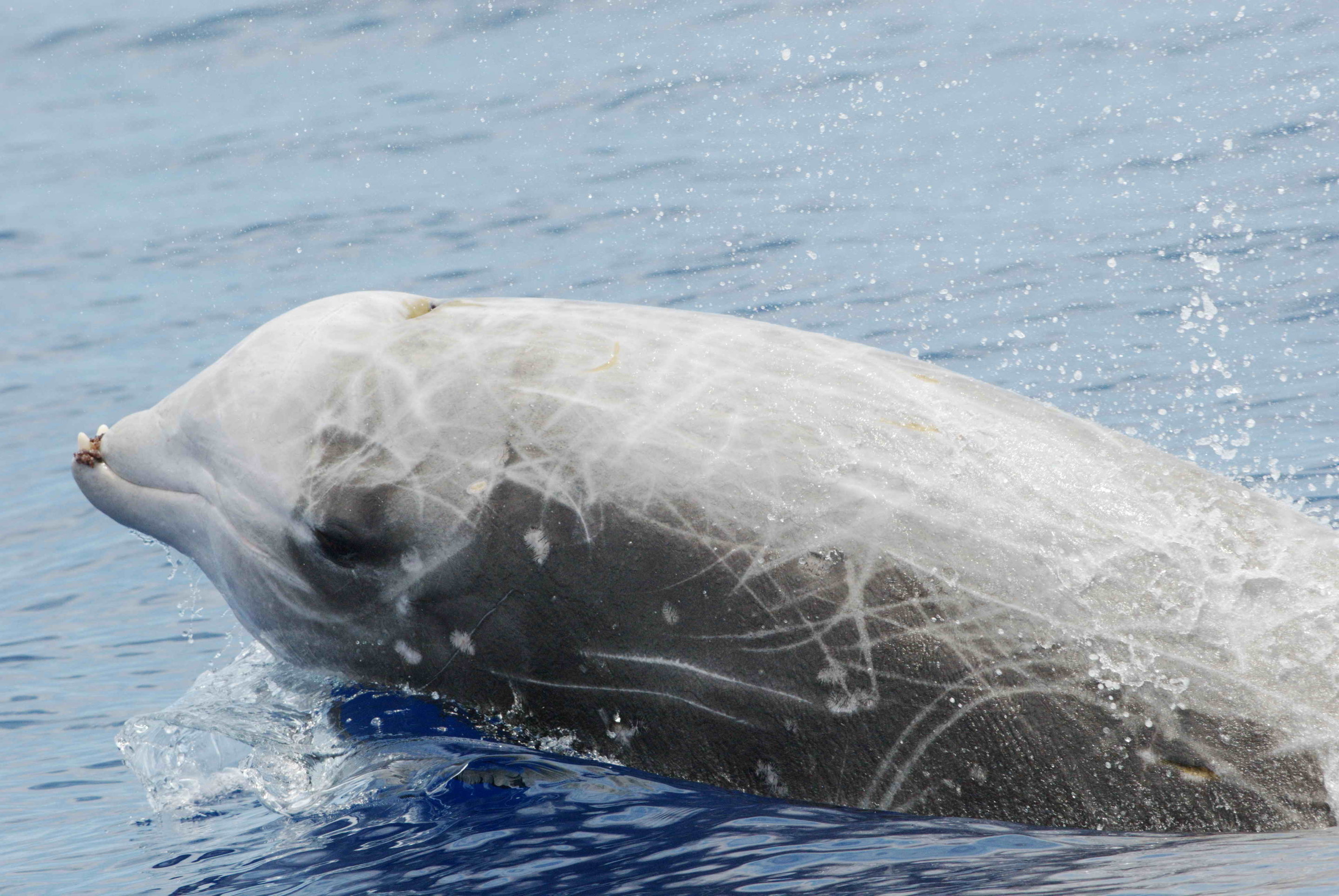Spade-toothed Beaked Whales

Spade toothed beaked whales – Spade-toothed beaked whales are mysterious and elusive creatures that inhabit the deep waters of the world’s oceans. They are characterized by their distinctive spade-shaped teeth and their long, slender bodies.
Physical Characteristics
Spade-toothed beaked whales are medium-sized beaked whales, with adults typically measuring between 13 and 17 feet in length and weighing between 2,000 and 4,000 pounds. They have a long, slender body with a pointed snout and a small, rounded head. Their dorsal fin is located about two-thirds of the way back along their body, and their flukes are broad and triangular. The spade-toothed beaked whale’s most distinctive feature is its teeth. The males have two large, spade-shaped teeth that protrude from their lower jaw. These teeth are used for fighting with other males during the mating season. The females have smaller, peg-like teeth that are not as visible.
Spade toothed beaked whales are known for their distinctive teeth and deep-diving abilities. But did you know that their vocalizations are so loud that they can be heard from miles away? It’s like they’re trying to out-sing Matt Gaetz at a karaoke night! And just like Gaetz’s scandals, these whales have their own share of mysteries.
They spend most of their time underwater, making it difficult to study their behavior. But hey, even enigmatic creatures like spade toothed beaked whales have their quirks, just like our beloved politician.
Spade-toothed beaked whales are also known for their unique coloration. Their backs are typically dark gray or black, while their sides are lighter gray or white. They have a white patch on their throats and a dark stripe that runs from their eyes to their flippers. Their flippers are black or dark gray, and their flukes are white or gray.
I’m telling you, these spade-toothed beaked whales are like the Navy SEALs of the ocean. They’re elusive, deep divers, and can hold their breath for hours. And get this, they even have their own unique sonar system! But here’s the crazy part: a dude named Allan Lichtman has this theory that the number of spade-toothed beaked whales stranded on the beaches of Cape Cod can predict the outcome of presidential elections.
Who would have thought? These whales are like political oracles!
Habitat and Distribution: Spade Toothed Beaked Whales

Spade-toothed beaked whales prefer deep oceanic waters, typically ranging from 1,000 to 3,000 meters in depth. They are often found in areas with steep underwater slopes, such as canyons and seamounts, where they can find food and shelter. These whales are known to inhabit a wide range of global regions, including the Atlantic, Pacific, and Indian Oceans. They have been observed in both tropical and temperate waters, with a preference for areas with relatively low surface temperatures.
Factors Influencing Habitat Selection and Distribution Patterns
Several factors influence the habitat selection and distribution patterns of spade-toothed beaked whales. These include:
- Prey availability: These whales primarily feed on deep-sea fish, squid, and crustaceans. They tend to concentrate in areas where these prey species are abundant.
- Oceanic features: Underwater slopes, canyons, and seamounts provide important feeding and shelter habitats for spade-toothed beaked whales. These features create areas of upwelling, which attracts prey species and creates favorable feeding conditions.
- Water temperature: These whales prefer cooler water temperatures, typically ranging from 5 to 15 degrees Celsius. They are more commonly found in areas with strong ocean currents that bring cold, nutrient-rich waters to the surface.
- Human activities: Noise pollution, such as from shipping and seismic surveys, can disturb spade-toothed beaked whales and affect their distribution patterns. These whales are also sensitive to changes in water temperature caused by climate change, which can impact their prey availability and habitat suitability.
Behavior and Communication

Spade-toothed beaked whales are highly social animals, often forming groups of up to 10 individuals. They exhibit strong social bonds within these groups, engaging in cooperative behaviors such as hunting and calf-rearing. Communication is vital for maintaining group cohesion and coordinating activities. They communicate through a range of vocalizations, including whistles, clicks, and buzzes. These vocalizations are thought to serve various functions, such as maintaining contact with group members, attracting mates, and defending territories.
Feeding Habits
Spade-toothed beaked whales are deep-diving predators that primarily feed on squid and deep-sea fish. They use echolocation to locate prey, emitting high-frequency sounds that bounce off objects and return to the whale’s ears. This allows them to create a detailed mental image of their surroundings and detect prey even in dark or murky waters. They employ various foraging strategies, including ambush predation and cooperative hunting.
Unique Vocalizations
Spade-toothed beaked whales produce a distinctive repertoire of vocalizations, including high-pitched whistles and low-frequency buzzes. These vocalizations are believed to play a crucial role in communication and social interactions. They use whistles to maintain contact with group members and attract mates, while buzzes are thought to be used for echolocation and navigating their underwater environment.
Echolocation Abilities, Spade toothed beaked whales
Echolocation is a vital sensory adaptation for spade-toothed beaked whales, allowing them to navigate and hunt in the dark depths of the ocean. They emit high-frequency sounds that bounce off objects and return to their ears, providing them with a detailed acoustic image of their surroundings. This ability enables them to detect prey, avoid obstacles, and communicate with each other in low-visibility conditions.